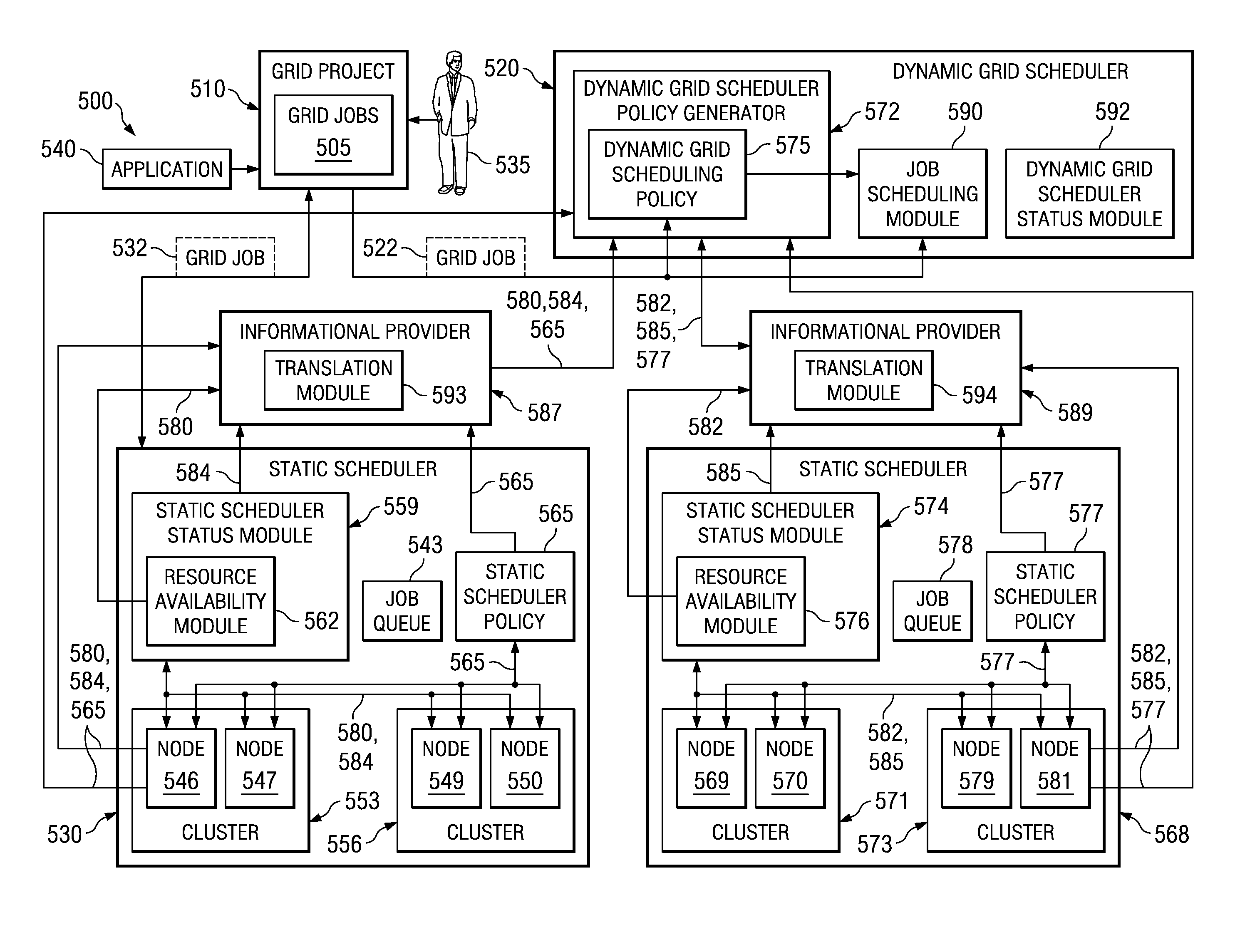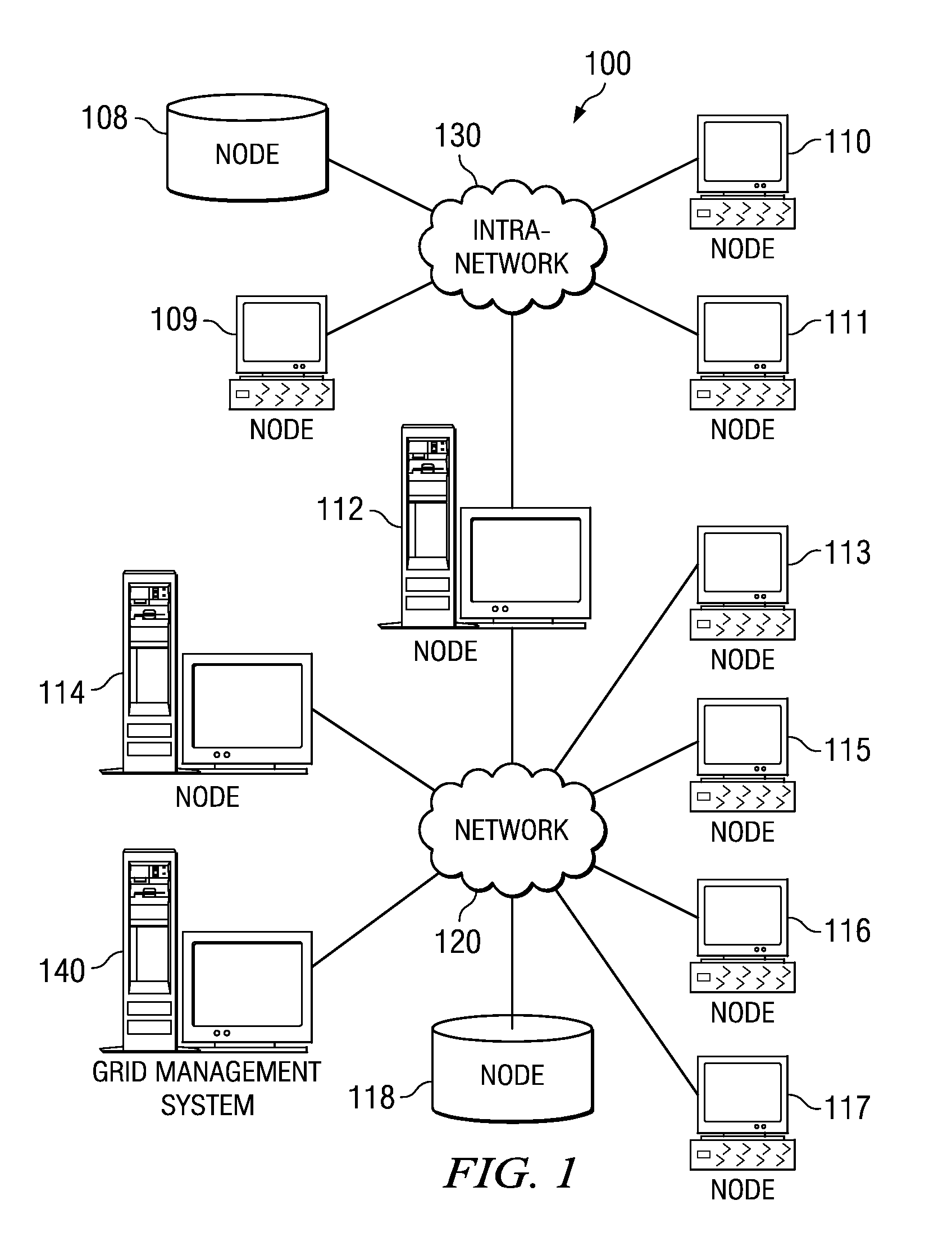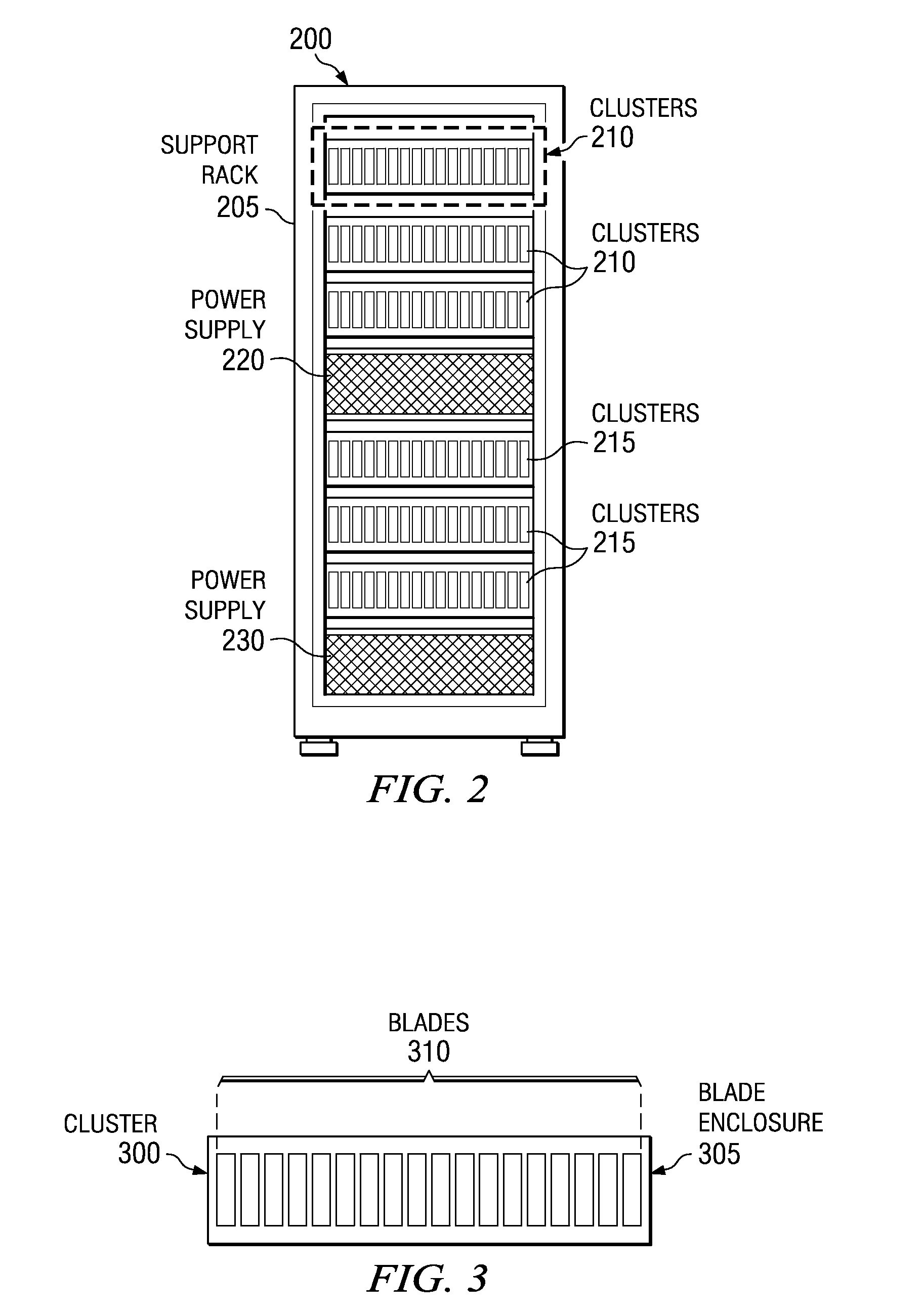Scheduling grid jobs using dynamic grid scheduling policy
a grid job and dynamic scheduling technology, applied in the field of data processing system, can solve the problems of inefficiency, static scheduling policies that fail to efficiently utilize resources for applications, and the most challenging performance of resource management and scheduling
- Summary
- Abstract
- Description
- Claims
- Application Information
AI Technical Summary
Benefits of technology
Problems solved by technology
Method used
Image
Examples
Embodiment Construction
[0037]FIG. 1 is an exemplary diagram of a computing grid environment in which aspects of the present invention may be implemented. As shown in FIG. 1, computing grid 100 includes nodes 108-118 coupled together via one or more networks 120-130. The nodes may be any type of computing device that is capable of either processing grid jobs and grid data or is capable of providing such grid data to other grid nodes. For example, one of nodes 108-118 may be a server computing device, client computing device, workstation, blade, personal computer, database system, mainframe computer system, or the like.
[0038]Computing grid 100 is managed by the grid management system 140. Grid management system 140 communicates with nodes 108-118 to obtain information about each of the nodes in nodes 108-118 and to submit grid jobs and grid data to nodes 108-118 for processing. Grid management system 140 provides the necessary functionality for determining which nodes in nodes 108-118 in the computing grid ...
PUM
 Login to View More
Login to View More Abstract
Description
Claims
Application Information
 Login to View More
Login to View More - R&D
- Intellectual Property
- Life Sciences
- Materials
- Tech Scout
- Unparalleled Data Quality
- Higher Quality Content
- 60% Fewer Hallucinations
Browse by: Latest US Patents, China's latest patents, Technical Efficacy Thesaurus, Application Domain, Technology Topic, Popular Technical Reports.
© 2025 PatSnap. All rights reserved.Legal|Privacy policy|Modern Slavery Act Transparency Statement|Sitemap|About US| Contact US: help@patsnap.com



